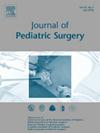Morio Kasai Corrects the Uncorrectable: Hepatic Portoenterostomy for Biliary Atresia
IF 2.4
2区 医学
Q1 PEDIATRICS
引用次数: 0
Abstract
One of the fundamental innovations of pediatric surgery is hepatic portoenterostomy for biliary atresia, widely known as the Kasai procedure for its originator, Morio Kasai (1922–2008), of Sendai, Japan. It was the first effective operation for the “uncorrectable” form of biliary atresia, where death within months from biliary cirrhosis was certain. His radical premise was that microscopic ductules present in the fibrous tissue of the porta hepatis, when transected, drained enough bile to relieve cholestatic jaundice. His first operations from 1955 to 1961 had a jaundice-free survival rate of only 8 percent, but the cures were durable. By 1982–1986 survival reached 55 percent.
Adoption of his procedure in the West came slowly. The original operation in 1955 was reported in the Japanese literature in 1959, but the first English language communication came in 1968. Surgeons disbelieved his results. Scientific chauvinism held that advances in pediatric surgery came from America and Europe; Japan had little to add.
Surgeons visited Sendai to learn from Kasai, notably John Lilly and R. Peter Altman, then of Washington, DC, Jacques Valayer in Paris, and Edward Howard in London. At first, mortality rates in their hands was high. As expertise developed in the West with the technically demanding operation, mortality fell and approached those reported by Kasai. Successes in America, France, and England proved Kasai's operation as effective and one of signal achievements in pediatric surgery.
Morio Kasai 矫正了无法矫正的疾病:肝门肠造瘘术治疗胆道闭锁
肝门肠造瘘术治疗胆道闭锁是小儿外科的基本创新之一,因其创始人是日本仙台的葛西盛雄(1922-2008 年)而广为人知。这是针对 "无法矫正 "的胆道闭锁的首次有效手术,在这种情况下,患者几个月内肯定会死于胆汁性肝硬化。他的根本前提是,存在于肝门纤维组织中的微小导管在横断后能排出足够的胆汁,从而缓解胆汁性黄疸。从 1955 年到 1961 年,他的第一批手术的无黄疸存活率仅为 8%,但治愈率却很高。到 1982-1986 年,存活率达到 55%。1955年的最初手术于1959年在日本文献中报道,但首次用英语交流是在1968年。外科医生不相信他的结果。科学沙文主义认为,小儿外科的进步来自美国和欧洲,日本没有什么可以补充的。外科医生们纷纷前往仙台向葛西学习,特别是当时华盛顿特区的约翰-利利(John Lilly)和R-彼得-阿尔特曼(R. Peter Altman)、巴黎的雅克-瓦拉耶(Jacques Valayer)以及伦敦的爱德华-霍华德(Edward Howard)。起初,他们手中的手术死亡率很高。随着西方对这一技术要求极高的手术的专业技术的发展,死亡率有所下降,并接近卡萨伊报告的死亡率。在美国、法国和英国取得的成功证明,葛西的手术是有效的,是小儿外科的标志性成就之一。
本文章由计算机程序翻译,如有差异,请以英文原文为准。
求助全文
约1分钟内获得全文
求助全文
来源期刊
CiteScore
1.10
自引率
12.50%
发文量
569
审稿时长
38 days
期刊介绍:
The journal presents original contributions as well as a complete international abstracts section and other special departments to provide the most current source of information and references in pediatric surgery. The journal is based on the need to improve the surgical care of infants and children, not only through advances in physiology, pathology and surgical techniques, but also by attention to the unique emotional and physical needs of the young patient.

 求助内容:
求助内容: 应助结果提醒方式:
应助结果提醒方式:


